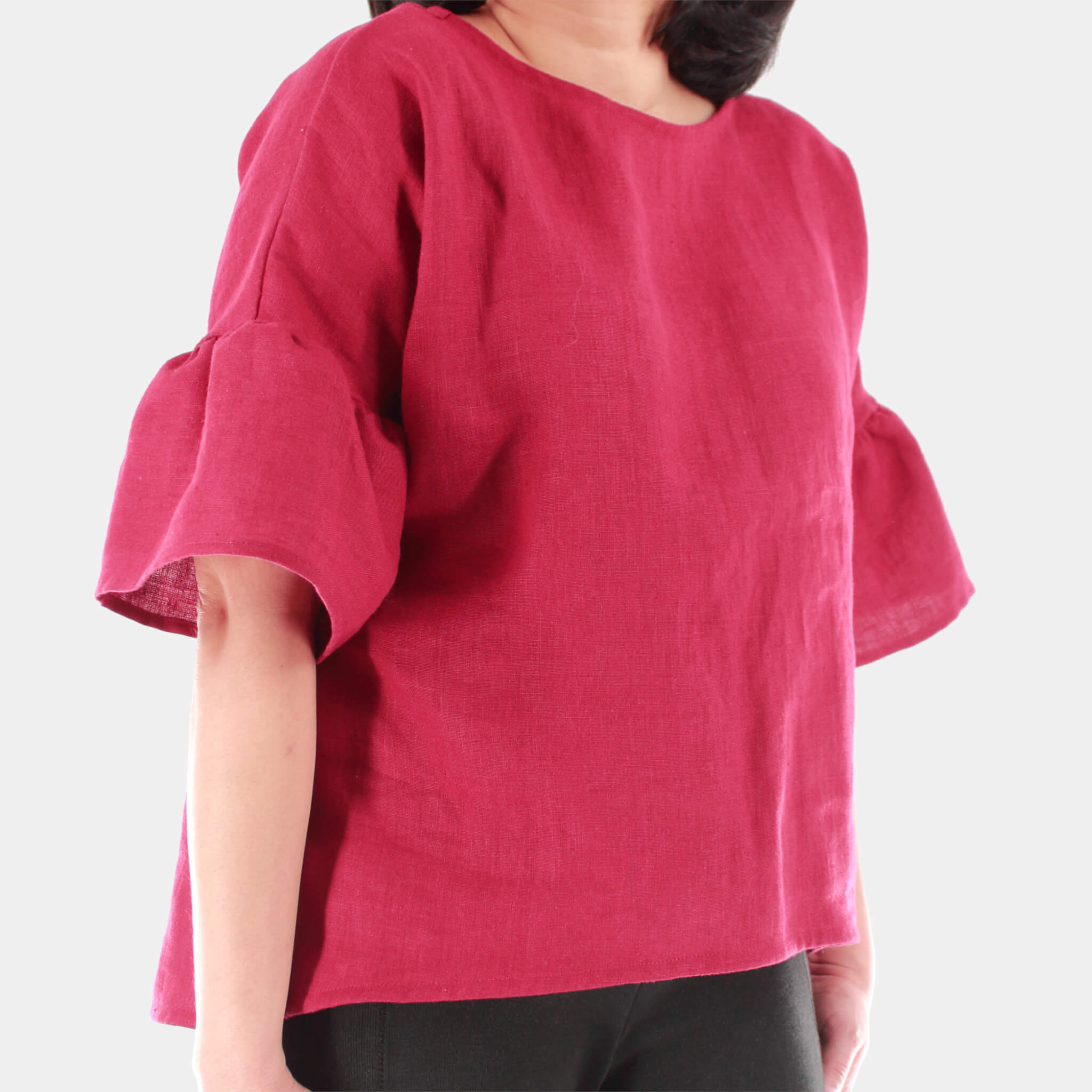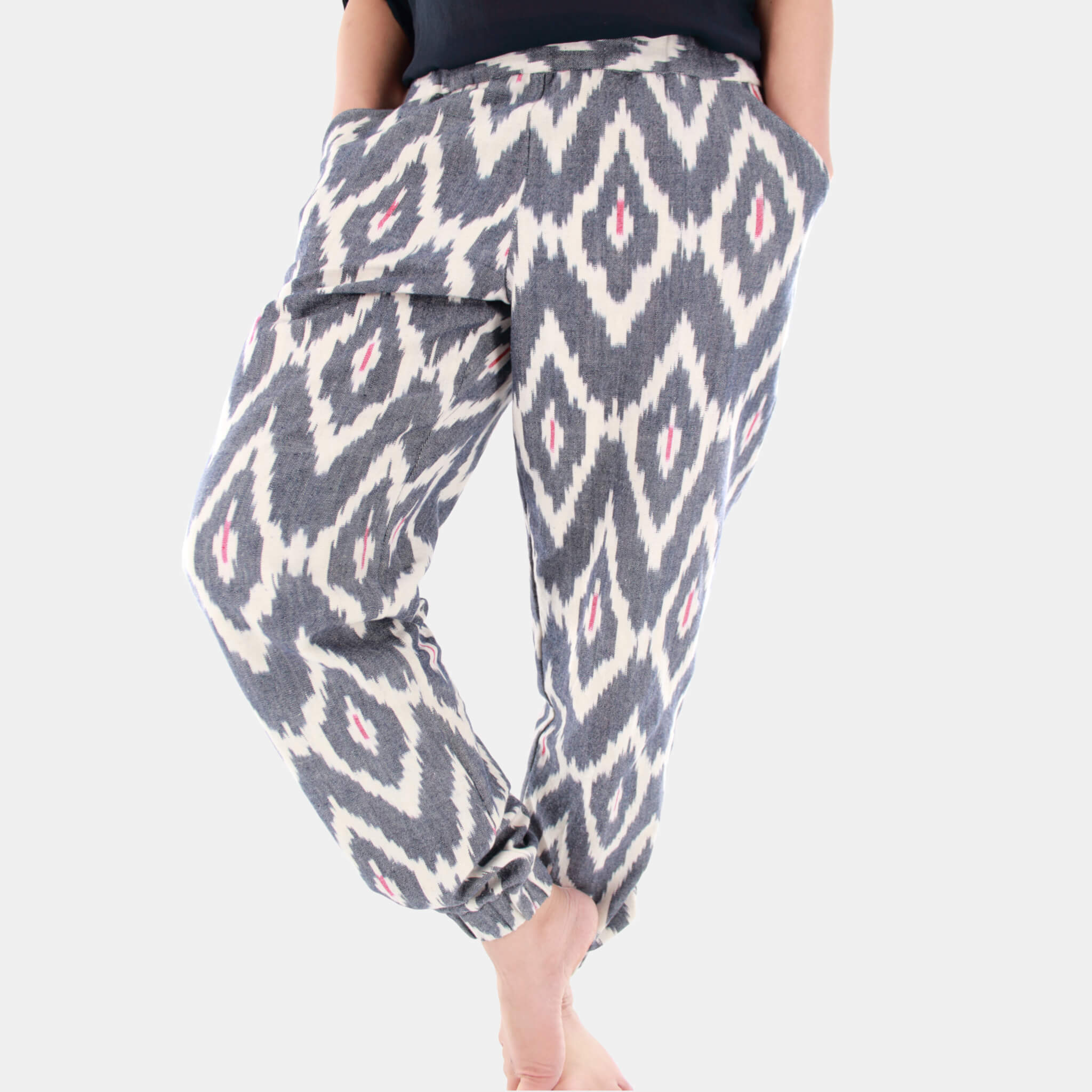As a part of the Morning Lazziness series about influential women leaders who attained success with their incredible designs, I had the pleasure of interviewing Aditi Patel.
“Fashion is the armor to survive the reality of everyday life.” —Bill Cunningham
Aditi Patel is the Founder and a self-taught Designer of an independent fashion label POESHAQ that makes handcrafted clothing in natural fibers. The brand website did a soft launch during the COVID-19 pandemic in May 2020, and her new four seasons collection launched online in May 2021. She holds an MBA degree in Finance and prior to this venture spent almost a decade working in the advertising industry in New York City.
Many thanks for doing this for us; please let our users know about yourself and POESHAQ?
I was born and raised in India, where I first fell in love with the colors and textures of artisanal textiles and weaves. Both my parents have impeccable taste in fashion. Back in the day, we bought our cotton fabric separately and then got our clothes made by a family tailor. Ready-to-wear clothing was still uncommon. So I learned a lot about fabrics, colors, and Indian weaves from my parents.

However, I never thought much of my passion and dreams. I valued being free and independent. I relocated to the US to pursue an MBA in Finance. But after a decade-long career in New York City, I still felt unfulfilled. All this time, fashion never really left me. I just adapted and fell prey to polyester-ridden fast fashion clothing. When the awareness dawned on me, I wasted no time creating a textile-focused womenswear fashion label – POESHAQ that offers style, comfort, and fit. In Hindi, the brand name means garments worn by men or women.
Can you share a story with us about what brought you to this specific career path?
I love fashion. It is ingrained in me. In my early twenties, I upcycled my mom’s old sarees into dresses or jackets for myself. Even my younger sister wore those garments after I moved to the US. Fashion was something I gravitated towards when no one was watching. It was a playful way of expressing myself and never felt like work. Maybe it was time to trust my passion and see where it takes me.
How is your brand POESHAQ contributing to the environment?
When I launched POESHAQ, I wanted to make natural fibers more accessible to women. Just like cotton clothing is for men. For that, my designs had to be contemporary without compromising comfort or fit.
Biodegradable fibers were one of the first choices I made for POESHAQ. The current collection is only available in 100% Cotton or Linen.
The second choice I made was in terms of minimalist and purposeful design. An ornamental zipper will not make it to my final design. The trims used are either recycled plastic or biodegradable threads or fabric. So at the end of life for the product, it is easier to recycle.
My third choice was to make the collection made to order to minimize production waste. Manufacturing clothing in bulk and keeping up with seasonal trends causes unnecessary pressure on society and the environment. When inventory is unsold, it is either burnt, sold off to discount stores, shipped, or trashed in developing nations. I think waste is one of the big problems in the fashion industry.

Clothing materials, that don’t cause harm to the environment?
My knowledge about cotton and linen fibers was quite limited until I stepped into this new role for POESHAQ. Over time, I have realized linen production is far more sustainable compared to cotton. Linen uses less water, fewer pesticides and can be processed without the use of chemicals. Organic cotton is coming up in a big way and maybe a suitable alternative to linen. Environmentally friendly textiles come at a higher price point, so I design clothes that can last several years.
These days, many brands worldwide are launching their sustainable clothing line, so how are you competing with this?
Sustainability to me is a very broad term and can mean a variety of different things. For my business, it means a reduction of wastage by offering comfortable materials, responsible design, and structured fit.
Since I launched my business in May 2020, I have noticed a few established slow fashion clothing lines close doors. They still had demand for their products, but their fixed overheads weighed heavy. From what I can tell, funding is a big part of why businesses close down. It is unfortunate but still true.
To remain competitive, I made a conscious decision to bootstrap my fashion startup. I could not afford to be frivolous with where I spent my next dollar. My work now relies on collaborative technology to bring efficiency while reducing waste. In fashion, that begins from when you put pen to paper. Between June 2018 – May 2020, I educated myself to use open-source software for pattern-drafting to scale, to edit product photoshoots, and now plan to learn 3d modeling for testing product samples. By thinking outside the box, I have been able to keep my overheads low and minimize fabric and paper wastage. I still have a long way to go, but this feels like a steady foundation for the business.
Research says many people prefer eco-friendly clothes these days, what’s your view on it? Still, the global-warming is increasing. What’s your take on it?
Part of my entrepreneurial journey is to wear multiple hats on the job. As I cannot fund primary consumer research, I read fashion-related research articles to understand consumer behavior. One interesting finding that I came across is that the quality and appearance of clothing are more important criteria for many consumers than ethical or sustainable aspects.

Many find it cost-prohibitive to purchase from ethical or sustainable businesses, but fewer associate sustainable consumption with less purchasing. This point is interesting because sustainability applies to both supply and demand. If I represent the supply side, then the fashion consumers represent the demand side.
If every individual begins to invest in fewer but better-quality clothing pieces, we will address more than one issue facing the people and the planet. Global warming is a sum of all our actions or inactions – not just of the Fashion industry.
In moments of self-doubt or adversity, how do you build yourself back up?
I think Nike was on to something with their trademarked slogan – “Just do it.” As a solopreneur, not getting feedback for your choices right away can be hard to navigate. So I remind myself to show up every day and do one thing differently if possible. Workouts in the morning also help me stay focused throughout the day. On other days, I lean in on my support network that includes my mentor and family.
What challenges did you face at the start of your business?
I am facing one of the biggest challenges since I started this business – Marketing. If I had to pick my strengths, it would involve my work behind the scenes and not in public view. Public relations and Marketing are new to me. I am trying to get comfortable in my skin and put my work out in the open – either through social media platforms or speaking and writing to journalists. I am still learning and adapting to this new role requirement. My one takeaway is that it will get easier if I keep practicing.
What would you say are the top 3 skills needed to be a successful entrepreneur, and why?
It may be too early to answer this question objectively. Maybe I will rephrase it to say what qualities I think I have to survive the uncertainty of a startup business.
I am persistent towards anything I set my mind to achieve. To give something your best requires a significant amount of time and patience. I tend not to take on a lot at any given time. So far, I have not regretted the outcome of my persistent effort and patience, even if it was not favorable.
This leads me to the third quality, to be honest with yourself. Changing tracks when things do not work out is equally acceptable since you already put your best foot forward. Every choice you make will set a new course for an adventure. I am always ready for it, even if it was not my original choice.
What are your plans for the future, how do you plan to grow this company?
I try not to live in the future as it is not guaranteed. For now, I am focused on promoting my business across both offline and online channels. I recently hired a freelancer to help with public relations and marketing. Since more people are getting the Covid-19 vaccine, I am also considering hosting a craft fair outside my home studio to spread awareness locally.
There is no shortage of good ideas out there, but people struggle to take a good idea and translate it into an actual business. How did you overcome this challenge?
If people stay true to their passion, I think they will carve out a niche for themselves. I read somewhere that people do not buy goods and services. They buy relations and stories. Maybe it was Seth Godin who quoted that. An idea does not sell, but your story and reasons do. It is also what keeps you going when everything else seems to fall apart. I am here to share my passion and my love story with natural fibers.
What is your “One Thing I Wish Someone Told Me Before I Started” and why?
I can possibly point to one thing that stands out for me is to seek a mentor. Since I was switching my career from digital advertising to fashion, I had no network to help me get started. After I had a reasonable foundation built for the business, I sought mentorship from someone within the fashion industry who could understand my challenges, guide my way or even just be a sounding board.
What is your favorite mantra or affirmation that you say to yourself to keep you going?
Recently, I have been gravitating towards the “Just do it” mantra. When I feel distracted, overwhelmed, or not confident – I remind myself that not doing it is worse than doing it wrong. As long as I keep at it and improvise when necessary, I will be okay.
What does success mean to you?
Success through my work means bringing a positive experience in people’s lives while lowering carbon footprint. And remain financially viable so that other businesses can take inspiration.


